Home> Technical Articles> How To Replace A Throttle Valve In A Hydraulic System
- AddressNo.1875 East Changjiang Road, New District, Wuxi, Jiangsu,China
- Factory AddressNo.1875 East Changjiang Road, New District, Wuxi, Jiangsu, China
- Worktime9:00-18:00
- Phone(Working Time)86-510-85310167
Hydraulic systems rely on throttle valves to regulate the fluid flow and pressure within the system. Throttle valves play a critical role in controlling the hydraulic system's performance, ensuring that it operates efficiently and effectively. However, over time, these valves may wear out or become damaged, leading to decreased system performance and potential system failure.
Replacing a faulty throttle valve in a hydraulic system requires some knowledge and skill. It is essential to follow the correct steps and use appropriate tools to ensure that the replacement is done correctly. In this guide, we will explore the importance of throttle valve replacement, the steps involved in replacing a throttle valve in a hydraulic system, and the tools and equipment required for the job. We will also discuss common issues with throttle valves in hydraulic systems and provide some preventive maintenance tips to help prolong the system's lifespan and prevent costly repairs.
Importance of Throttle Valve Replacement:
Throttle valves play a crucial role in regulating the fluid flow and pressure within the hydraulic system, affecting its overall performance. A faulty throttle valve can cause pressure fluctuations, system overheating, or a sudden loss of fluid flow, leading to decreased system efficiency and potential system failure.
Replacing a worn-out or damaged throttle valve can prevent these issues and improve the system's overall efficiency. A new throttle valve can provide a smooth and consistent fluid flow, ensuring that the hydraulic system operates correctly. A correctly functioning throttle valve can also prevent pressure spikes or drops, which can damage other system components or lead to system failure.
In addition to improving system efficiency and preventing system failure, replacing a faulty throttle valve can also save costs in the long run. A malfunctioning throttle valve can cause increased energy consumption and higher maintenance costs. By replacing the valve promptly, you can avoid these costs and ensure that the hydraulic system operates efficiently and effectively.
In summary, replacing a faulty throttle valve in a hydraulic system is crucial to prevent system failure, improve efficiency, and save costs in the long run.
Steps for Replacing a Throttle Valve in a Hydraulic System:
Replacing a throttle valve in a hydraulic system requires some knowledge and skill, as well as the appropriate tools and equipment. Here are the steps involved in replacing a throttle valve in a hydraulic system:
-
Shut down the hydraulic system and disconnect all power sources: Before beginning any work on the hydraulic system, it is essential to shut down the system and disconnect all power sources to prevent any accidents or injuries.
-
Identify the throttle valve location and remove the valve assembly from the system: Locate the throttle valve assembly within the hydraulic system and remove it from the system. This may require the use of pipe wrenches or adjustable pliers to loosen the valve connections.
-
Inspect the valve for any signs of wear or damage, including cracks, leaks, or warping: Thoroughly inspect the valve for any signs of wear or damage that may have caused the valve to malfunction. If the valve is damaged, it will need to be replaced with a new valve of the same make and model.
-
If the valve is damaged, replace it with a new valve of the same make and model: Purchase a new throttle valve of the same make and model as the old valve. Ensure that the new valve is compatible with the hydraulic system and its components.
-
Install the new valve assembly in the same location as the old one, making sure all connections are secure and properly tightened: Install the new valve assembly in the same location as the old valve, ensuring that all connections are secure and properly tightened. This may require the use of adjustable wrenches or flare nut wrenches to tighten the valve connections.
-
Test the new valve assembly and ensure that the hydraulic system is working correctly before restarting it: Test the new valve assembly by running the hydraulic system and observing the fluid flow and pressure. Ensure that the hydraulic system is working correctly and efficiently before restarting it.
By following these steps, you can replace a faulty throttle valve in a hydraulic system correctly and efficiently, ensuring that the hydraulic system operates smoothly and efficiently. It is essential to consult a hydraulic system expert for complex issues or if you are unsure about the replacement process.

Tools and Equipment Required for Throttle Valve Replacement:
Replacing a throttle valve in a hydraulic system requires specific tools and equipment to ensure that the replacement is done correctly. Here are some of the tools and equipment required for throttle valve replacement:
-
Hydraulic fluid drain pan: A hydraulic fluid drain pan is required to catch any hydraulic fluid that may leak during the replacement process.
-
Adjustable wrenches and pliers: Adjustable wrenches and pliers are essential tools for loosening and tightening valve connections.
-
Pipe wrenches: Pipe wrenches are required to loosen and tighten pipe connections in the hydraulic system.
-
Flare nut wrenches: Flare nut wrenches are required to tighten the hydraulic line connections.
-
Torque wrench: A torque wrench is used to tighten valve connections to the manufacturer's recommended torque specifications.
-
Replacement throttle valve: A new throttle valve of the same make and model as the old valve is required for replacement.
-
O-ring or gasket seal (if required): If the old valve had a gasket or O-ring seal, a new seal of the same size and shape is required for replacement.
-
Clean rags and shop towels: Clean rags and shop towels are required to clean and dry valve components during the replacement process.
By having the appropriate tools and equipment, you can ensure that the throttle valve replacement is done correctly and efficiently, avoiding any further damage to the hydraulic system.
Common Issues with Throttle Valves in Hydraulic Systems:
Throttle valves in hydraulic systems can develop various problems that affect their performance and efficiency. Here are some common issues with throttle valves in hydraulic systems:
-
Clogging due to debris or contaminants in the hydraulic fluid: Debris or contaminants in the hydraulic fluid can clog the throttle valve, leading to decreased fluid flow and pressure within the hydraulic system.
-
Wear and tear due to long-term use or exposure to high pressure or temperature: Throttle valves can experience wear and tear over time due to long-term use or exposure to high pressure or temperature. This can lead to valve malfunctions, affecting the performance of the hydraulic system.
-
Leakage or damage to seals, O-rings, or gaskets: Throttle valves can develop leaks due to damaged or worn-out seals, O-rings, or gaskets. This can lead to decreased fluid flow and pressure within the hydraulic system, affecting its overall performance.
-
Failure of internal components, such as springs or control mechanisms: Throttle valves can fail due to internal component failure, such as springs or control mechanisms. This can lead to a sudden loss of fluid flow and pressure within the hydraulic system.
By being aware of these common issues, you can take preventive measures to ensure that your throttle valve and hydraulic system operate smoothly and efficiently. Regular maintenance and inspection of the hydraulic system and its components can help prevent these issues and prolong the system's lifespan.
Preventive Maintenance Tips for Throttle Valves in Hydraulic Systems:
Preventive maintenance is essential to ensure that throttle valves in hydraulic systems operate smoothly and efficiently. Here are some preventive maintenance tips for throttle valves in hydraulic systems:
-
Regularly inspect and clean the hydraulic fluid to prevent clogging and contamination: Regularly inspect the hydraulic fluid for any signs of contamination or debris that may clog the throttle valve. Change the fluid and filter regularly to prevent clogging and ensure that the hydraulic system operates smoothly.
-
Monitor the system's pressure and temperature to avoid overheating or pressure spikes: Regularly monitor the hydraulic system's pressure and temperature to ensure that they are within the recommended range. This can prevent pressure spikes or overheating, which can damage the throttle valve and other system components.
-
Replace seals and O-rings as needed to prevent leakage and damage: Inspect the seals and O-rings of the throttle valve regularly and replace them as needed to prevent leakage and damage to the valve and other system components.
-
Perform regular maintenance and servicing of the entire hydraulic system to prevent wear and tear of its components: Regular maintenance and servicing of the hydraulic system can prevent wear and tear of its components, including the throttle valve. This can prolong the system's lifespan and prevent costly repairs.
By following these preventive maintenance tips, you can ensure that your throttle valve and hydraulic system operate smoothly and efficiently, minimizing downtime and repair costs. It is also recommended to consult a hydraulic system expert for complex issues or if you are unsure about the maintenance steps.

Throttle valves are critical components of hydraulic systems, regulating the fluid flow and pressure within the system. A faulty throttle valve can cause pressure fluctuations, system overheating, or a sudden loss of fluid flow, leading to decreased system efficiency and potential system failure.
Replacing a worn-out or damaged throttle valve in a hydraulic system is crucial to prevent system failure, improve efficiency, and save costs in the long run. The replacement process requires some knowledge and skill, as well as the appropriate tools and equipment.
Preventive maintenance is essential to ensure that throttle valves and hydraulic systems operate smoothly and efficiently. Regular inspection and cleaning of the hydraulic fluid, monitoring of the system's pressure and temperature, and replacing seals and O-rings can prevent common issues with throttle valves and other system components.
By following these steps and taking preventive measures, you can ensure that your throttle valve and hydraulic system operate efficiently and effectively, minimizing downtime and repair costs. It is also recommended to consult a hydraulic system expert for complex issues or if you are unsure about the replacement or maintenance process.


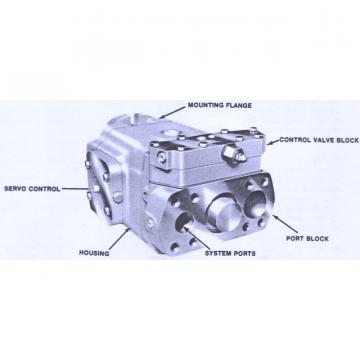 Dansion gold cup piston pump P30P-8L5E-9A4-A00-0B0
Dansion gold cup piston pump P30P-8L5E-9A4-A00-0B0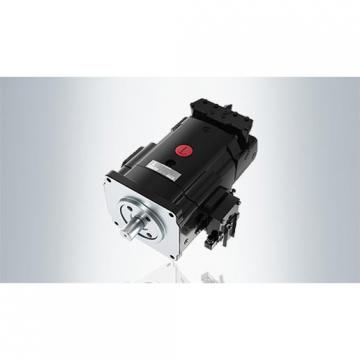 Dansion gold cup piston pump P30P-8L5E-9A2-B00-0C0
Dansion gold cup piston pump P30P-8L5E-9A2-B00-0C0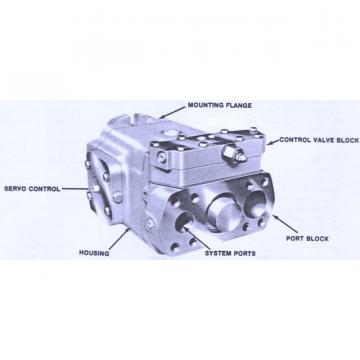 Dansion gold cup piston pump P30L-8L5E-9A7-A0X-B0
Dansion gold cup piston pump P30L-8L5E-9A7-A0X-B0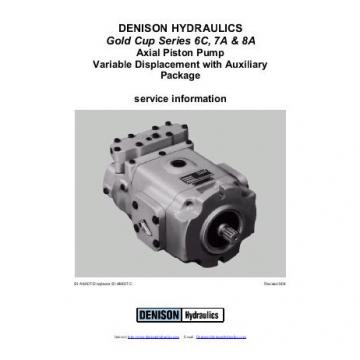 Dansion gold cup piston pump P30P-2R5E-9A7-B00-0C0
Dansion gold cup piston pump P30P-2R5E-9A7-B00-0C0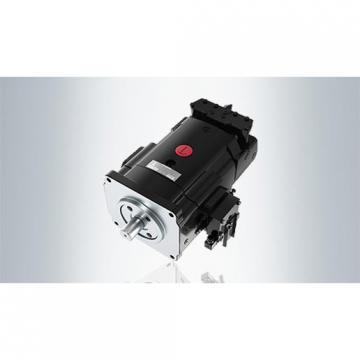 Dansion gold cup piston pump P30L-7R5E-9A2-A0X-D0
Dansion gold cup piston pump P30L-7R5E-9A2-A0X-D0